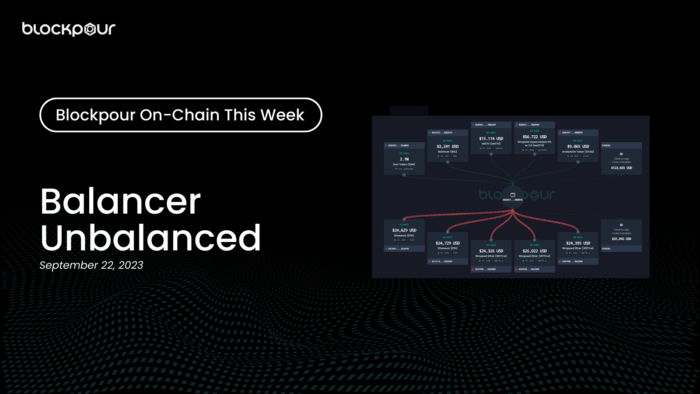In assessing a gutted crypto market, a lawyer shares some lessons for the main characters of the next cycle.
Luckily, unicorns are rare
Icarus liked to look directly into the Sun. It blinded him a bit each time, but adults characterize children for their regrettable wastefulness. The parallel to the crypto industry is not lost.
Here we are, reflecting on a down crypto market in mid-2023. A year and a half ago, the implosion of Terra Luna sent gale-force winds across the industry, which blew up the shirts of dozens of companies and revealed regrettable business practices. Centralized lenders such as Celsius and Voyager collapsed. Centralized exchange FTX was caught in the midst of what may turn out to be one of the largest fraud schemes in history. Three Arrows Capital left investors holding less than magical pixie dust.
It isn’t as simple as thinking that those companies merely fell apart in a down market. Wassie Lawyer, also known as YK, told us on a late Friday night in August that it was hubris, and in FTX’s case, fraud, which is to blame.
“Think about unicorn founders in their thirties propped up as geniuses and that they can revolutionize something. They get unlimited access to funding… but don’t realize that when the music stops, the funding ends. They think I can just go ahead and raise more. Everything’s fine.”
YK summed up by stating that “in a lot of bankruptcy cases, the founders were at the very least negligent,” which is a trait he attributes to the founders of the failed major crypto firms that have contributed to the current extended bear market.
The God Complex -or- Mistaking wax for aluminum
YK is a restructuring lawyer who has handled high-stakes bankruptcy cases within and outside of the crypto markets. He gets his LOLs online by commenting on ongoing cases such as the Three Arrows Capital (3AC) and FTX 2.0 fiascos. His legal experience informs his opinions on the prescient matters that will leave an indelible scar on the industry.
A common thread among the biggest crypto firms that have seen their demise over the past year and a half has been the founders who display a god complex, or the existence of extreme entitlement and arrogance. In short, people with the god complex believe that they can do no wrong - that no matter how close they fly to the sun, someone will repair their wings.
Stay Humble
YK believes that the ease with which unicorn founders raise money in the good times gets to the founders’ heads, which makes it difficult for these founders to respond effectively when in a crisis. The industry saw this with Sam Bankman-Fried’s (SBF’s) interpretation of Effective Altruism in action, which YK said “is gambling with customers’ funds to create an infinitely awesome universe.”
“The founders of 3AC had that same confidence when they had problems, thinking they could trade their way out of it… [Alex] Mashinsky was trying to build an empire, but he allocated funds recklessly.”
However, when the problems became abundantly clear for FTX, 3AC, and Celsius, the founders of those companies apparently refused to admit it. SBF from FTX has claimed that he was “well-intentioned” despite allegedly tampering with material witnesses to his $8 billion fraud case as he sits in prison. Kyle Davies and Su Zhu from 3AC still publicly claim that they did nothing wrong g after their crypto hedge fund filed for bankruptcy last year. It lost all of its $3 billion under management. Alex Mashinsky from Celsius pleaded not guilty from his prison cell to recent fraud charges from the SEC after earning about $42 million from selling his platform’s $CEL token ahead of the company’s billion-dollar demise.
His observation drew an immediate parallel to the contemporary crypto markets which are mesmerized by obscure, esoteric memecoins, and hinted that it could be a misstep for us to idolize one work of art or pump one type of crypto asset.
Face the Music
Regardless of the causes for each firm’s downfall - which stems largely from the Terra Luna collapse - there was no public indication from these founders that their firms were in trouble. As a way of trying to understand the mindset of a founder with the god complex, YK said that when Terra Luna imploded, there was an “incentive to say that everything was fine.” While many firms were insolvent at that time, there were some with no exposure to $UST.
“The biggest issue was that even if a particular lender was fine, they were still f*ed if people pulled liquidity! So, as a founder, you saw everything was burning, but if you didn’t say it was fine, the show was over anyway.”
Could Daedalus even fix this thing?
The term RWA, or Real-World Asset, is gaining narrative steam through 2023. Some RWA cryptos existexists already, like $GFI from Goldfinch and $KLIMA from KlimaDAO, which tokenizes carbon offsets. Influencers have made long, winding threads about the topic while industry and thought leaders talk about its possible (or assured) impact on the crypto markets in the next cycle. But from the perspective of one Wassie Lawyer, RWA’s may have a very difficult time factoring into the next market cycle as a means of strengthening projects and generating returns.
1/ The Real-World Asset revolution in #DeFi is already here — but many aren't paying enough attention yet.
— Ignas | DeFi Research (@DefiIgnas) January 24, 2023
Here's the current state of RWAs to help you catch the wave 🌊
What are the options we now have to try to repair the market and usher in another bullish cycle? Furthermore, can it even be fixed at all?
There’s No Single Fix-All
When we began discussing RWA’s as a way that founders could hedge against losses in other emerging sectors of the crypto industry for the next cycle, YK said that there are flaws in the use of these tools that will likely prevent their adoption in a short timeframe. First, among the flaws with RWA’s in crypto, he said, is that there isn’t a great definition of RWA yet within the crypto space.
“When you say real-world assets, what do you actually mean? Right now the one thing that has worked is T-bills in a high-yield environment.”
With tokenized real estate, he noted that there are a great deal of questions regarding apparent conflicts with existing real estate laws that surface when the virtual financial world gets involved. For example, it is unclear who actually owns a tokenized house. If token holders own it, who carries the deed? If a company owns a tokenized house, a single CEO owns the company, which basically poses the same problem.
🚨New properties 24.08.2023🚨
— Tokenisierte Immobilien (@immotoken_blog) August 24, 2023
1/2
11380 Pinehurst St, Detroit, MI 48204
Singe Family
Price per token: 50,85$
Income: 9,37%#tokenisierung #realt #RWA pic.twitter.com/NShQcodpu2
The next issue is about legality. YK pointed out that the movement of funds both on-chain and through banks to distribute yield and transfer money in the case of house purchases becomes an issue due to local regulations. These issues, YK says, point to “the legal entanglements of when you get the digital assets into the real world or the other way around.”
“People came into the space thinking they could revolutionize the industry because their uncle was a real estate agent even though they never sold a house and don’t understand how things have worked for decades.”
He warned that a new breed of bankrupted crypto founders could be born if they rely too heavily on the success of RWA’s in the crypto space. Although he said he “really likes Real-World Assets,” it’s just “too early” for them due to the inimitable legal entanglements, not least of them being the risk of violating US securities laws.
Build Smartly, and Use Wisely
Despite its obvious design flaw, you have to hand it to Daedalus for MacGyvering the perfect tool that he and Icarus used to escape capitivity. They merely needed to fly low into the sunset and safety. Had Celsius properly used the tools at its disposal, YK believes that it also could have survived.
Celsius Network was a so-called centralized crypto lender that had $25 billion AUM at its peak. It folded in 2022 after a firestorm of FUD that it was insolvent. It all culminated in user withdrawals being paused in July of that year after the company moved 9-figures of crypto to, ironically, FTX, before FTX’s malfeasance also came to light.
Alex Mashinsky advised users to increase deposits while he sold $CEL tokens. Celsius also used customer funds to invest in various ventures, such as a Bitcoin mining facility, which could have generated revenue. Most of those ventures failed, like its involvement with Terra Luna.
No matter its failings, YK believes that Celsius had a shot at longevity but that it blew up by “taking customer money and putting it into questionable investments.”
“It’s a matter of getting complacent in a bull market. Mashinsky was just trying to diversify into other aspects of crypto and build an empire. What they were doing could have worked if it was done in more moderation.”
Make CEX(es) Great Again
FTX was one of the largest centralized exchanges in the world. The house of digital cards that SBF, its founder and CEO, had carefully constructed since 2019 was worth over $32 billion at its peak. It is now worth pennies and is in the midst of bankruptcy proceedings thanks to allegedly rampant malfeasance and fraud committed by SBF.
The recovery process that YK prefers as a means to make former FTX users whole is to restructure the exchange into an FTX 2.0 that issues recovery tokens. He calls this option an “incredible opportunity” to fill roughly $10B in claims from users and a whopping $44B from the IRS. The problem with filling all the claims, he says, is that there simply aren’t enough assets at FTX now to cover them.
14/ Now that we have some R-Tokens and E-Tokens, we need a marketplace to trade them.
— wassielawyer (哇西律师) (@wassielawyer) August 20, 2023
Good thing FTX 2.0 is an exchange. So let's make sure that as part of FTX 2.0's business model, you can trade the FTX debt and FTX 2.0 equity on it.
Might as well learn from @OPNX_Official. pic.twitter.com/SZgRzTh1xp
He says he would dollarize all the claims as of a set date, but that this is an issue all its own because crypto assets are not fiat currency, so the exchange rate is much more difficult to determine than for a fiat currency. From this point, he says a deal could be made to issue a recovery token, but that the automatic follow-up question to such an issuance would be, “How do you grow the pool of assets so that it’s enough to back the claims?".
YK said that some in the community of claimants would think that “when it launches, everything will go 5x.” Others, he says, would want the token to guarantee equity in FTX 2.0, which would mean a payoff at a later date.
“Until all claims are filled, equity token holders would get no returns. But I know crypto traders can’t sit still. If you give them something, they’re going to have to trade it, which would generate fees on the FTX 2.0 exchange.”
This recovery token option could make all users whole after a few years when, he says, the fees generated from traders fills a pool with enough assets to simply make everyone whole. Then, recovery token holders would receive that ‘cut’ of FTX 2.0 and be made at least partially whole.
“Ultimately, FTX 2.0 running is better than it NOT running. If it generates more value than if it didn’t exist, then we should have it!”
About Blockpour
Blockpour is a technology firm specializing in Web3 data and analytics, offering individuals and businesses indispensable data and tools to navigate the dynamic on-chain universe while bridging seamlessly to the off-chain world.
Through our real-time and historical multi-chain data feeds, businesses and traders can fully unlock the power of blockchain data to inform their strategies, optimize operational efficiency, and drive top-line growth.
To learn more about Blockpour check out our website and follow us on Twitter or LinkedIn. For sales or inquiries about the API, contact [email protected].
Disclaimer
The above article is for informational purposes only and is not financial advice. Blockpour is a data aggregation and analytics platform only and does not provide financial advice or services of any kind.






